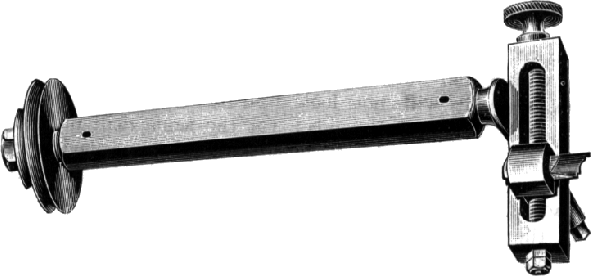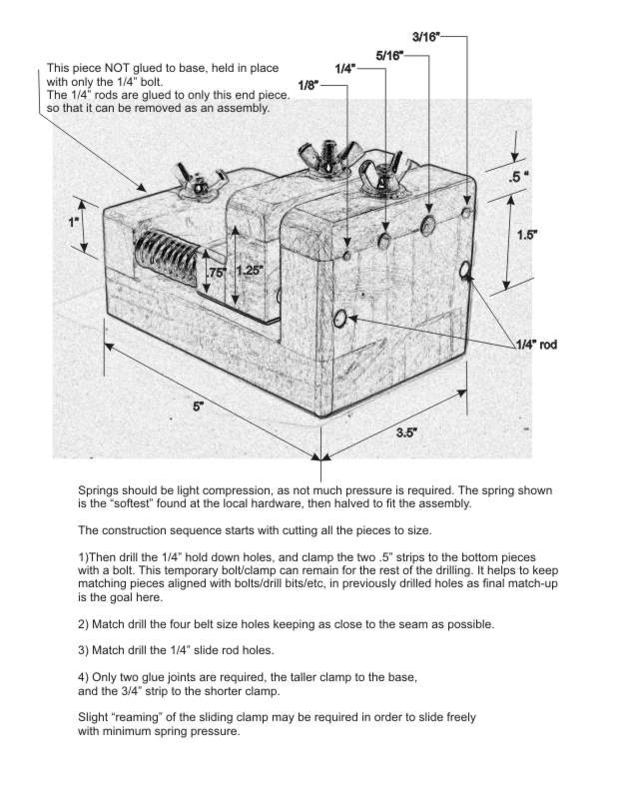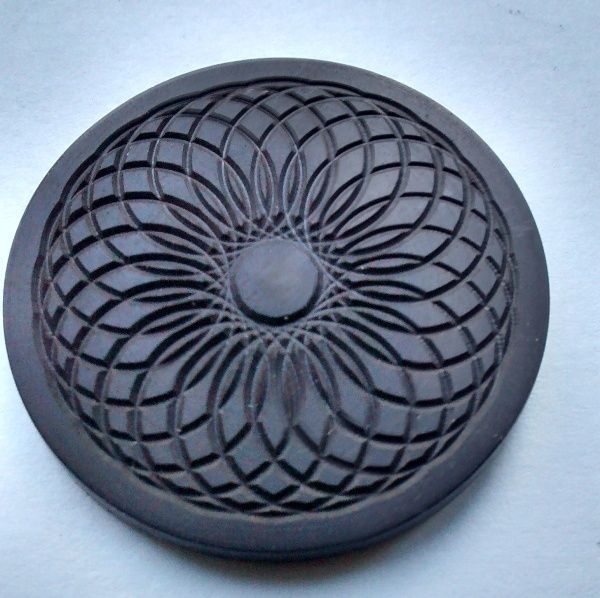Eccentric Cutting Frame
Overview
| |||||||||||
The Eccentric Cutting Frame is a variation of the fly cutter, but the cutter's body is held in a Drill Spindle. The cutter is spinning along the same axis as the Drill Spindle, but eccentrically from it (like the eccentric chuck).
One pattern often produced with an ECF is a barleycorn. Another is a Turk's Head.
|
Images courtesy Lindow Machine Works | ||||||||||||||||||||||||||||||||||||||||||||||||||||||||||||||||||||||||||||||||||||||||||||||||||||||||||||||||||||||||||||||||||||||||||||||||||||||||||||||||||||||||||||||||||||||||||||||||||||||||||||||||||||||||||||||||||||||||||||||||||||||||||||||||||||||||||||||||||||||||||||||||||||||||||||||||||||||||||||||||||||||||||||||||||||||||||||||||||||||||||||||||||||||||||||||||||||||||||||||||||||||||||||||||||||||||||||||||||||||||||||||||||||||||||||||||||||||||||||||||||||||||||||||||||||||||||||||||||||||||||||||||||||||||||||||||||||||||||||||||||||||||||||||||||||||||||||||||||||||||||||||||||||||||||||||||||||||||||||||||||||||||||||||||||||||||||||||||||||||||||||||||||||||||||||||||||||||||||||||||||||||||||||||||||||||||||||||||||||||||||||||||||||||||||||||||||||||||||||||||||||||||||||||||||||||||||||||||||||||||||||||||||||||||||||||||||||||||||||||||||||||||||||||||||||||||||||||||||||||||||||||||||||||||||||||||||||||||||||||||||||||||||||||||||||||||||||||||||||||
|
|
Historical ECFs are held in a tool holder by the long shaft. Newer versions (as shown in the Small ECF and Large ECF pictures to the left) are held in a collet inserted into a drill spindle. In both cases, they are usually rotated using an overhead drive.
|
|
There is also a hand-operated version of this tool, which is called by some a Pearling Tool.
Examples of work produced with this device
For more about making pieces with this tool, see Barleycorn / Turk's Head.
Examples of this device in use
- This YouTube video shows the JaHo Ornamental Turning Device from Drechselbedarf. That device can be used on a traditional lathe to add ornamentation to work.
Usage Notes
The eccentric cutting frame is used with a fly cutter which should be ground with a wide cutting angle. The typical fly cutter is ground with a 60° angle (see also, Sharpening a Rose Engine Fly Cutter, Round Rod). However, jewelers have shown that the angle needs to be >90° for the cut so that the light is reflected back to the viewer. Otherwise, it simply looks like a set of thick dark lines. 120° is not uncommon.
|
|
Balancing the eccentric cutting frame is very important, and this YouTube video shows Jon Spencer's design for that.
|
|
Brian Clarry & David Lindow published a good procedure for aligning the ECF. The link to the published article, Lindow Rose Engine Alignment Procedures, is below.
|
|
The book, The Rose Engine Lathe by Norman Tweddle, has some great examples of this tool in use. Norman shows some very unusual techniques where the cutter is raised significantly above the axis of spindle rotation (e.g., 1”+), as well as angling the cutter’s plane of attack. You will need to read Norman’s book to have this explained better.
Sources for buying one
Sources for buying cutters for one
- Jon Spencer is a great resource for cutting tools.
More Information
Published Articles
- The Eccentric Cutter from James Lukin's Simple Decorative lathe Work, 1905. Ornamental Turners International Newsletter, Volume 25, No. 1 - Summer, 2018, pg. 8
- A High Speed Eccentric Cutter by Fred Armbruster.
- Ornamental Turners International Newsletter, Volume 6, No. 2 - Fall, 1999, pg. 1
- Ornamental Turners International Newsletter, Volume 20, No. 2 - Fall, 2013, pg. 18
- Lindow Rose Engine Alignment Procedures, Section 2, pg. 4 & pg. 8
Books and Papers
- The Art of Double-Counting on the Lathe - Whereby a Variety of Patterns in the form of Ellipses, Triangles, Squares, Pentagons, Hexagons, and Octagons, 3, 4, 5, 6, and 8-Looped Figures, Besides Others of a More Complex Character may be produced by means of the Common Eccentric Chuck used in Combination with the Division Plate and the Eccentric and Elliptical Cutters. With 60 Illustrations (1857), by Captain James Ash (inventor of the Elliptical Cutting Frame).
- Eccentric Turning, by an Amateur (actually, Nathaniel Brown Engleheart)
- The Rose Engine Lathe, by Norman Tweddle. This book has some great examples of this tool in use.
Web Sites
- John Edwards' web site, OrnamentalTurning.co.uk, has really great information about the setup and use of these devices. There is a lot of great information on John's web site, and it is worth reading. Understanding the history behind the devices we use really helps make one far better at understanding and using today's rose engines. And, as I noted elsewhere on this site, the newer designs for devices like a spherical slide still draw much from what was done more than a hundred years ago. And this is why so many books that were written up to 200 years ago are referenced in the books section.
|
Disclaimer: eMail comments to me at OTBookOfKnowledge @ Gmail.com. The process of woodturning involves the use of tools, machinery and materials which could cause injury or be a health hazard unless proper precautions are taken, including the wearing of appropriate protective equipment. |









